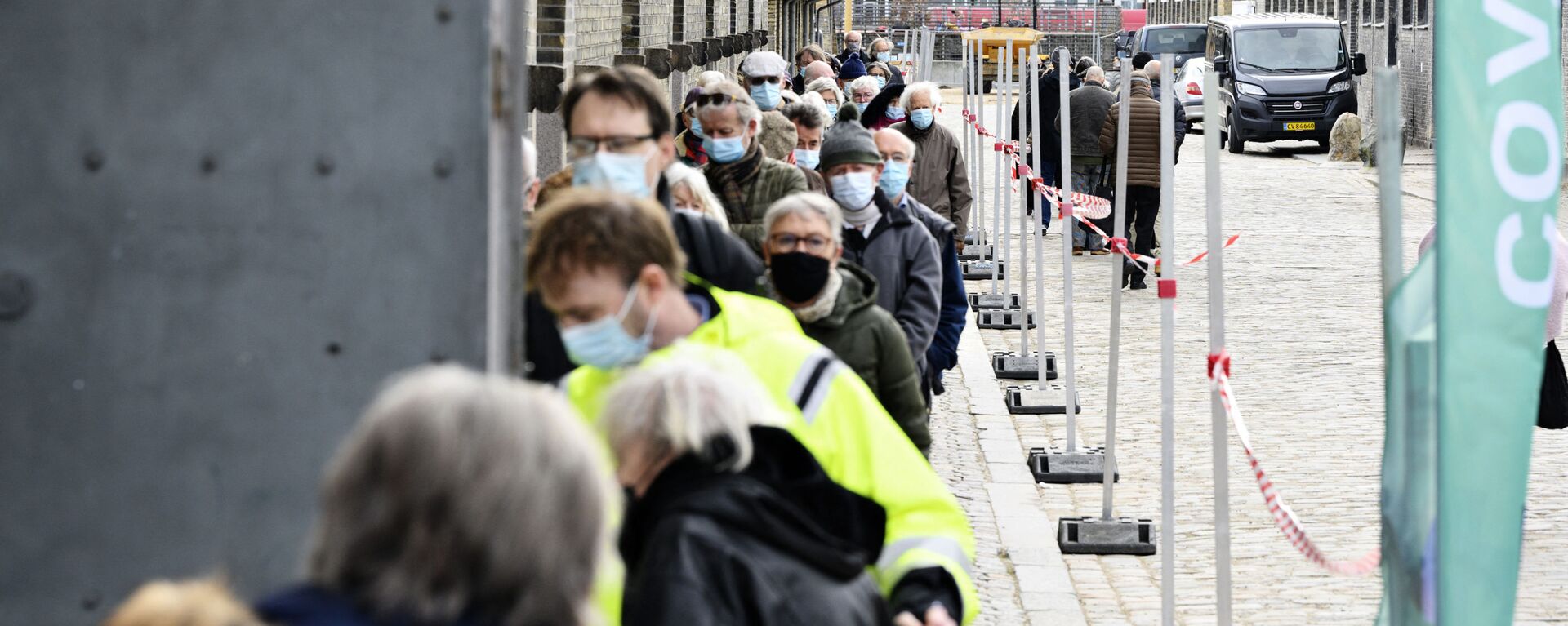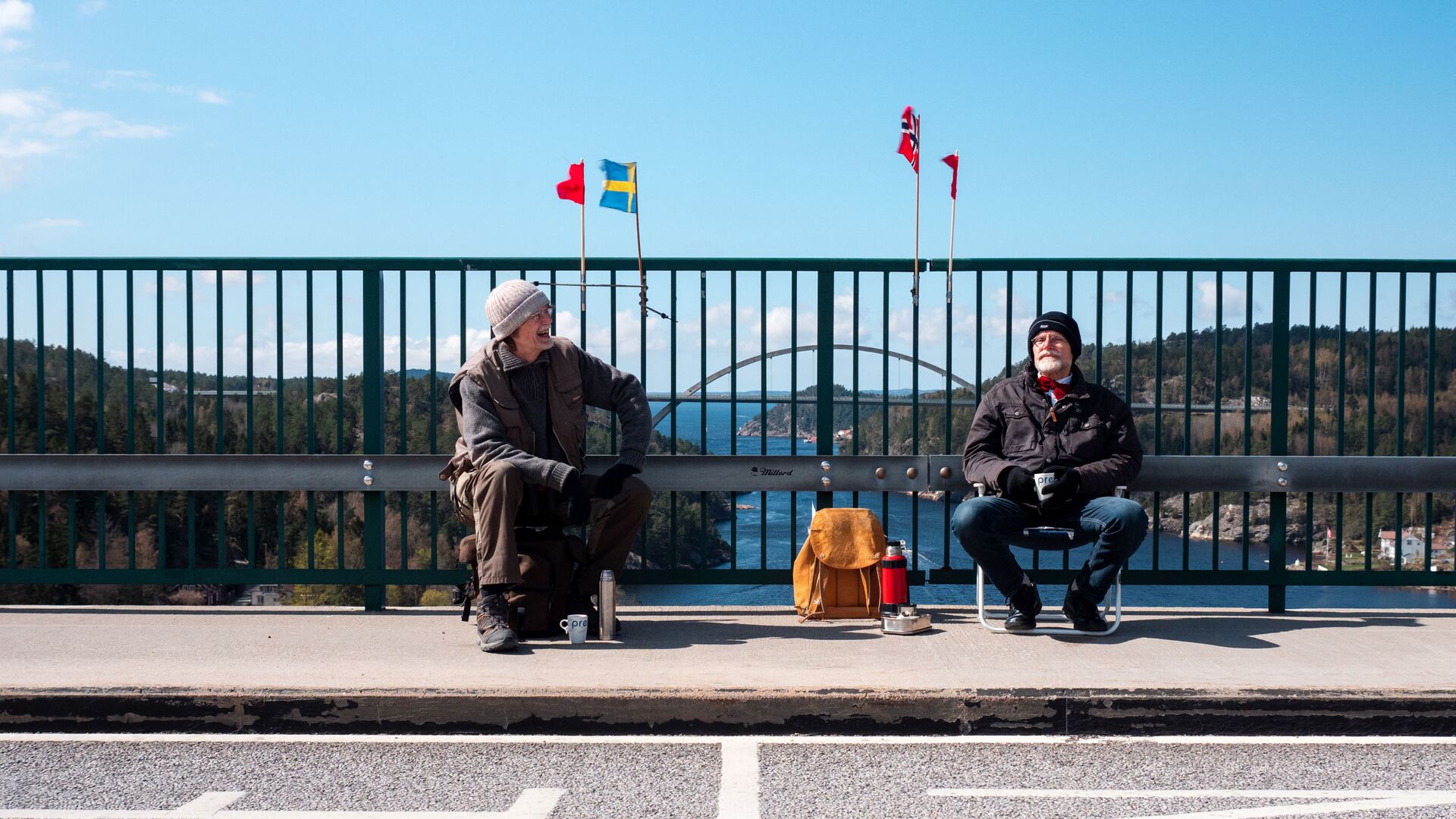https://sputnikglobe.com/20220202/scandinavian-countries-to-follow-danish-example-relax-restrictions-despite-massive-omicron-spread-1092673453.html
Scandinavian Countries to Follow Danish Example, Relax Restrictions Despite Massive Omicron Spread
Scandinavian Countries to Follow Danish Example, Relax Restrictions Despite Massive Omicron Spread
Sputnik International
The record spread of the Omicron wave hasn't stopped the Scandinavian countries from starting to wind down restrictions, as the novel strain is seen as less... 02.02.2022, Sputnik International
2022-02-02T05:21+0000
2022-02-02T05:21+0000
2022-02-02T05:21+0000
omicron covid strain
denmark
newsfeed
europe
sweden
norway
finland
scandinavia
omicron strain
https://cdn1.img.sputnikglobe.com/img/07e5/07/13/1083412149_0:0:2867:1614_1920x0_80_0_0_b35c7d23228ee1f0739f6c2d5f9d89ef.jpg
As Denmark became the first EU country to remove all restrictions despite a spike in Omicron cases, its Nordic peers are eyeing a similar approach despite the explosive spread.But whereas Denmark decided to go all in and remove all restrictions in what has been described as “back to normalcy”, its neighbours decided to proceed with more caution.For instance, Norway has announced a substantial easing of its COVID-19 restrictions. Among others the recommendation that people work from home has been abolished, restaurants are allowed to stay open longer and larger crowds are allowed. The quarantine period has been shortened to four days and testing upon entry into Norway has been removed. Sports training and other leisure activities can be carried out as normal. However, the recommendation for mouth protection in confined spaces remains to prevent many people from becoming ill at the same time.“We are in a new phase of the pandemic, when we can open society despite the high spread of infection,” Prime Minister Jonas Gahr Støre said at a press conference.Jonas Gahr Støre emphasised that Omicron yields a less serious illness, and that the vaccines give good protection. At the same time, envisaging the future, Støre ventured that most of his compatriots will become infected.At the same time, Jonas Gahr Støre underscored that the government is prepared to re-impose restrictions once the situation changes.“The pandemic is not over. Not in Norway and not in the world,” the prime minister said.Finland has announced plans to gradually lift the restrictions in February, before abolishing them entirely by the end of the month. In Finland, the peak of the Omicron wave appears to have passed in Helsinki and other major cities, while the countryside has still not reached it. At the same time, the popular demands to remove all restrictions are also increasing. According to Tervahauta, though, the Omicron wave hit Finland about two weeks later, so following Denmark's example outright would be unwise.The Swedish government, while having recently prolonged the restrictions, said they will be gradually phased out starting from 9 February, provided that the infection curve reverses and people continue to get vaccinated. Swedish experts also stressed that the country is several weeks behind Denmark, but is likely to follow the same course in due time.Social Minister Lena Hallengren emphasised that if the brake is released too quickly, Sweden risks a serious setback to society's basic functions.The Omicron strain is a sub-variant of COVID-19 that was first reported South Africa in late November 2021 which is now dominant in many countries in Europe and across the globe. While multiplying faster that the previously dominant Delta strain, it is seen as less severe, with less risk that hospitalisation will be necessary. Its high rate of spread combined with relatively milder health hazards re-ignited ideas of herd immunity, at least temporary, and sparked prognoses that it is likely to signal the end of the pandemic.At the same time, the World Health Organisation (WHO) voiced its worries about nations opening up prematurely and bowing to political pressure and cautioned against a speedy lifting of preventive measures such as mask mandates, especially in those countries with lower vaccination rates and health systems less equipped to handle a surge of severe infections.
https://sputnikglobe.com/20220125/hopes-of-herd-immunity-resurrected-as-denmark-ravaged-by-omicron-strain-1092498134.html
denmark
sweden
norway
finland
scandinavia
Sputnik International
feedback@sputniknews.com
+74956456601
MIA „Rosiya Segodnya“
2022
News
en_EN
Sputnik International
feedback@sputniknews.com
+74956456601
MIA „Rosiya Segodnya“
Sputnik International
feedback@sputniknews.com
+74956456601
MIA „Rosiya Segodnya“
denmark, newsfeed, europe, sweden, norway, finland, scandinavia, omicron strain
denmark, newsfeed, europe, sweden, norway, finland, scandinavia, omicron strain
Scandinavian Countries to Follow Danish Example, Relax Restrictions Despite Massive Omicron Spread
The record spread of the Omicron wave hasn't stopped the Scandinavian countries from starting to wind down restrictions, as the novel strain is seen as less severe, despite being more infectious.
As Denmark became the first EU country to remove all restrictions despite a spike in Omicron cases, its Nordic peers are eyeing a similar approach despite the explosive spread.
But whereas Denmark decided to go all in and remove all restrictions in what has been described as “back to normalcy”, its neighbours decided to proceed with more caution.
For instance, Norway has announced a substantial easing of its COVID-19 restrictions. Among others the recommendation that people work from home has been abolished, restaurants are allowed to stay open longer and larger crowds are allowed. The quarantine period has been shortened to four days and testing upon entry into Norway has been removed. Sports training and other leisure activities can be carried out as normal. However, the recommendation for mouth protection in confined spaces remains to prevent many people from becoming ill at the same time.
“We are in a new phase of the pandemic, when we can open society despite the high spread of infection,” Prime Minister Jonas Gahr Støre said at a press conference.
Jonas Gahr Støre emphasised that Omicron yields a less serious illness, and that the vaccines give good protection. At the same time, envisaging the future, Støre ventured that most of his compatriots will become infected.
“We we will be able to live with a lot of infection. We must tolerate that most of us become infected during the year, we can only ensure that not enough people become infected at the same time,” Jonas Gahr Støre said, stressing that up to 4 million Norwegians in the country of 5.3 million could be infected by summer.
At the same time, Jonas Gahr Støre underscored that the government is prepared to re-impose restrictions once the situation changes.
“The pandemic is not over. Not in Norway and not in the world,” the prime minister said.
Finland has announced plans to gradually lift the restrictions in February, before abolishing them entirely by the end of the month.
“We expect to remove them gradually until the end of February. If all goes well, this is probably the end of the pandemic in Finland,” Markku Tervahauta, Director General of the Institute for Health and Welfare (THL) told the Swedish newspaper Dagens Nyheter.
In Finland, the peak of the Omicron wave appears to have passed in Helsinki and other major cities, while the countryside has still not reached it. At the same time, the popular demands to remove all restrictions are also increasing. According to Tervahauta, though, the Omicron wave hit Finland about two weeks later, so following Denmark's example outright would be unwise.
The Swedish government, while having recently prolonged the restrictions, said they will be gradually phased out starting from 9 February, provided that the infection curve reverses and people continue to get vaccinated. Swedish experts also stressed that the country is several weeks behind Denmark, but is likely to follow the same course in due time.
“Sweden will probably follow Denmark's example, although two or three weeks later because we have always lagged behind the neighbouring countries during the Omicron epidemic,” Joakim Dillner, professor of infection epidemiology at the Karolinska Institute, toldDagens Nyheter.
Social Minister Lena Hallengren emphasised that if the brake is released too quickly, Sweden risks a serious setback to society's basic functions.

25 January 2022, 06:47 GMT
The Omicron strain is a sub-variant of COVID-19 that was first reported South Africa in late November 2021 which is now dominant in many countries in Europe and across the globe. While multiplying faster that the previously dominant Delta strain, it is seen as less severe, with less risk that hospitalisation will be necessary. Its high rate of spread combined with relatively milder health hazards re-ignited ideas of herd immunity, at least temporary, and sparked prognoses that it is likely to signal the end of the pandemic.
At the same time, the World Health Organisation (WHO) voiced its worries about nations opening up prematurely and bowing to political pressure and cautioned against a speedy lifting of preventive measures such as mask mandates, especially in those countries with lower vaccination rates and health systems less equipped to handle a surge of severe infections.





